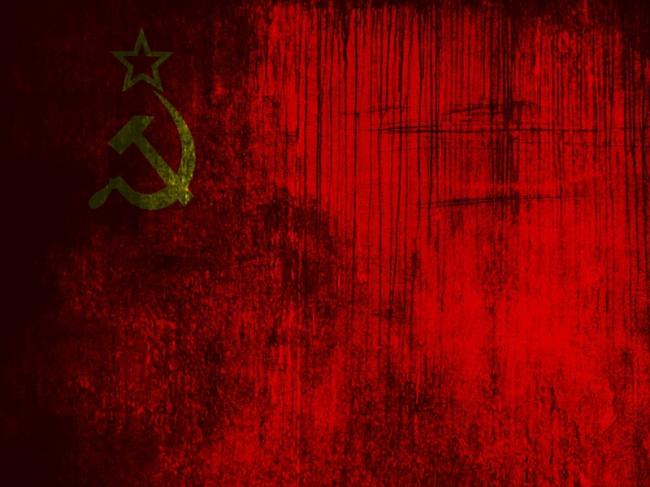
If the 2011 West Bengal Assembly Election was the beginning of a downfall of the Left in Indian politics, then the 2018 Tripura poll can be seen as one of the last nails in the coffin of the political ideology in India.
The landslide victories of Mamata and Modi in two Left bastions in a span of 7-8 years have raised justifiable questions on the future of the Leftist politics in the country.
As the visuals of Vladimir Lenin's statue being brought down in the state- where the right wing BJP just registered a sweeping victory - do the rounds in media and social media, it was almost a 1989 Soviet collapse era redux.
One of the strong ideologies which reined in patches of India for decades despite the collapse of Soviet Union was Communism. The party, symbolised by the blood-red colour with a star and sickle and a hammer, has always claimed to have fought for the commoners. But then what went wrong over the years that this political ideology is facing an identity crisis in the modern day politics?
Tripura was the last Left bastion in the country (if we discount Kerala where people vote alternative parties to power in every election) which was rocked, shaken and uprooted by the saffron brigade. The Left parties as a whole could only secure 16 seats in a 60-member Assembly with one seat yet to be polled.
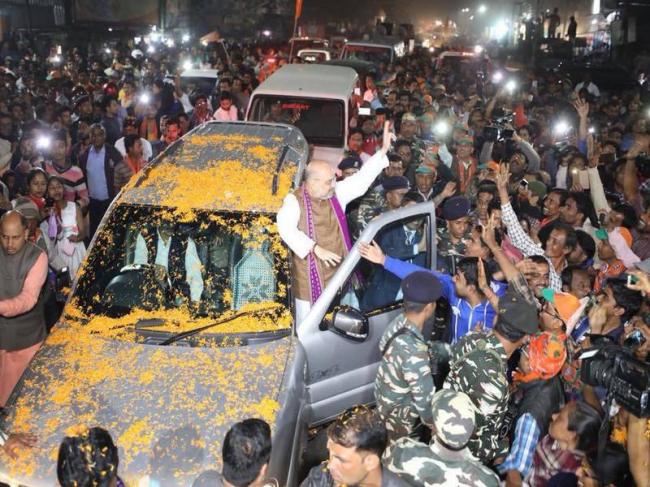
Though the Left has accused the BJP of horsetrading and using money power to dismantle the Manik Sarkar government in the state, several political questions can't be overlooked.
The biggest question now arises is whether Indians are ready to listen to the ideological verses of the Communism? If we go through the results, certainly not. The manner in which people are rejecting the "Gandhis" in the country, is also the manner in which they junked Lenin and Marx.
Political Analyst Amulya Ganguli says, "Left ideology is now dead. The Communism is a lost cause now."
If we trace the last decade or so, we can easily perceive the journeys of the political parties and how they are adapting to the changing times.
The BJP, the political wing of the Rashtriya Swayamsevak Sangha (RSS), has shown the transformation over the years.
Atal Bihari Vajpayee's or LK Advani's BJP was more popular as the Hindu party while Narendra Modi-Amit Shah-led BJP has stretched itself outside the Hindi heartland.
Trinamool Congress, once the arch-rival of the Left, was known for calling strikes when in the Opposition for a long time in West Bengal. But it was the same TMC which changed its stance just few years prior to its assumption of power in Bengal.
But the Left still believes in the strike culture which has been rejected by most parties with the passage of time.
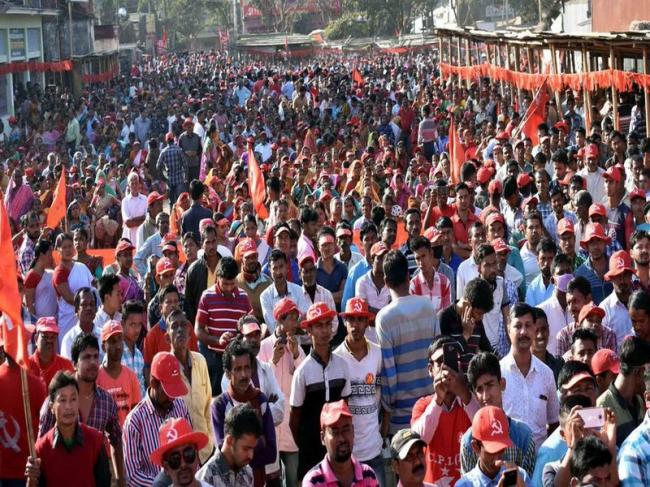 Image: twitter.com/cpimspeak
Image: twitter.com/cpimspeak
Prasenjit Bose, a former CPI-M member and political commentator, says: "This calls for serious introspection within the Left regarding its model of governance and how robust its policy alternative appears in the eyes of the people. "
"A significant section of the tribal people, especially the youth, has moved away from the CPI(M)/LF which shows that their aspirations have not been met by the LF rule, particularly with regard to employment generation, economic development and social justice"
Unable to modify its own strategies, the Left was seen to call strike as a means of protest against issues like demonetisation to only later regret it publicly. The CPI-M's call for a strike in Andhra Pradesh as a protest against the NDA government's Union Budget in 2018 is still fresh in minds of people.
The Left's inability to address and attract the youth has surely taken a toll on the party. The same old customs inside the party somewhere repulses the youth.
While the BJP had successfully manufactured and nurtured young leaders like Devendra Fadnavis, Sarbananda Sonowal, Keshav Prasad Maurya in just three years, the Left is still playing its card on old guards like Prakash Karat, Sitaram Yechury, Manik Sarkar.
Young Left leaders like Kanhaiya Kumar, Satarup Ghosh, Ritabrata Banerjee (who has been ousted by CPI-M) were never given enough importance in the Communist party.
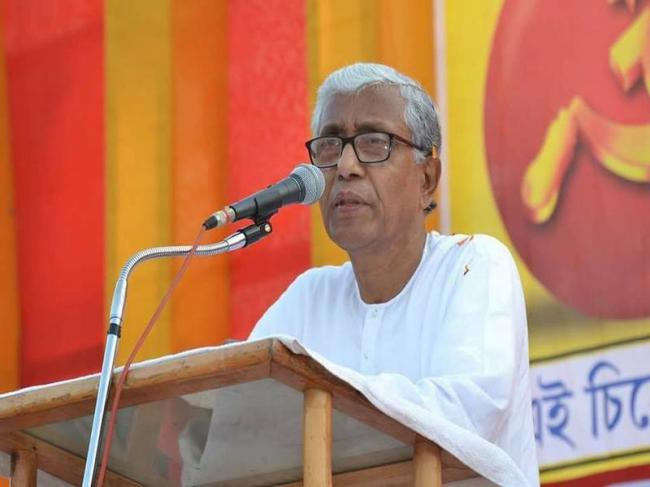 Image: twitter.com/cpimspeak
Image: twitter.com/cpimspeak
Speaking on the failure of the Left to attract youth, Ganguli says, "The inability to attract the youth has always been a problem with the Left. This is affecting the Communist party across the world."
The conflict of opinions inside the Communist Party are also becoming prominent over the years.
It is undeniable that if CPI-M had forged an alliance with the Congress in the Tripura poll, results could have been closer. But it is again the Kerala lobby, led by Karat, which ruled out the idea of alliance by Sitaram-led Bengal lobby.
Ganguli also believes the CPI-M should have allied with the Congress. "They should have followed the Sitaram Yechury party line and stitch an alliance with the Congress, at least in terms of seat sharing. If the CPI-M and the Congress fought together, they would have at least put up a fight."
Another battle in which the Left is trailing shockingly is the presence in social media. While BJP, Congress, Trinamool are active in updating their plans and programmes on social media, the Left is still far away from deriving the benefits from it.
If the BJP has done a Ph.D in social media, the Left seems to be in Kintergarden. While Rahul Gandhi and other opposition leaders are taking on Prime Minister Narendra Modi almost everyday on Twitter, there are only few CPI-M leaders like Sitaram Yechury who are active on the micro-blogging site.
In terms of development, the Leftists certainly can't claim the letter marks. In both West Bengal and Tripura, the developmental works are considered very poor given the time they ruled the states.
Ganguli says, "People became tired of the 25-year long Left rule in Tripura. Left had nothing to show on development in the state."
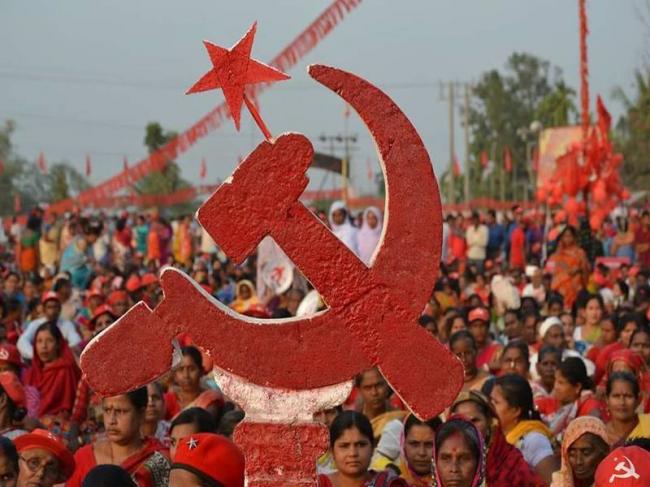 Image: twitter.com/cpimspeak
Image: twitter.com/cpimspeak
Political analyst Pradip Bhandari says, "CPI-M never faced an opposition in Tripura as Congress was a virtual opposition. Congress was an elite party which had no cadres on the ground. Post 2014, BJP mobilised cadres on the ground, deployed Sunil Deodhar as full time in-charge, brought Ram Madhav, Himanta Biswa Sarma. So all the anti-Leftist votes were consolidated with the BJP."
"Moreover there were very big issues and huge undercurrent against the CPI-M. There is maximum joblessness in the state; it is the most poor state; it is the state where only 30% of people have completed graduation; MNREGA was denied if one does not follow the Communist ideology. BJP had raised all the right issues and it had the Modi effect. CPI-M in its manifesto did not promise a single thing for Tripura," Bhandari says.
While West Bengal was greatly deprived of industrialisation during the Left rule (not that the state is doing great industrially under Mamata government), the situation in Tripura was even worse.
According to the reports, the northeastern state was ranked first in terms of unemployment recently, which is not something the CPI-M can boast of.
Rio Olympic star Dipa Karmakar's rejection of BMW car due to narrow lanes in Agartala, the capital city of Tripura, magnifies the deplorable situation in the state.
By and large, the CPI-M or the Left as a whole failed to adapt the dynamism of the modern political culture. It is still slow, shabby and continues to repeat the ideologies that hardly find prominence in the country.
One thing that the CPI-M had failed to provide over the years is also a poster boy like Jyoti Basu.
Though Manik Sarkar was the poorest Chief Minister and also credited for his clean image, he was certainly not the magnet to attract people towards Left.
While BJP is riding on the populism of Modi, or Trinamool on Mamata, the Left is devoid of charismatic leaders.
With the steady decline of Left votes in West Bengal, uninstallation of government in Tripura and the surge of BJP in Kerala, Communism in India truly gasps for breath now.
(The writer is a staffer in India Blooms News Service. He can be reached on gsouvik359@gmail.com)
Support Our Journalism
We cannot do without you.. your contribution supports unbiased journalism
IBNS is not driven by any ism- not wokeism, not racism, not skewed secularism, not hyper right-wing or left liberal ideals, nor by any hardline religious beliefs or hyper nationalism. We want to serve you good old objective news, as they are. We do not judge or preach. We let people decide for themselves. We only try to present factual and well-sourced news.







